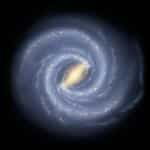This planet becomes the planet with the most moons after astronomers discover 128 new small moons, bringing its total to 274.
Astronomers have made an exciting discovery, adding 128 new moons to Saturn’s already impressive collection. This brings the planet’s total number of moons to 274, making it the planet with the most moons in our Solar System. The discovery was officially recognized by the International Astronomical Union and was led by Edward Ashton, an astronomer at Academia Sinica in Taiwan. This finding could help scientists better understand how planets and their moons evolve.
With these new additions, Saturn has overtaken Jupiter, which has 95 known moons. Other gas giants, Uranus and Neptune, remain in third and fourth place with 28 and 16 moons, respectively.
Small Moons With Unusual Orbits
Unlike Earth's Moon, which is over 3,400 kilometers wide, these newly discovered moons are much smaller, only a few kilometers across. They also follow unusual orbits around Saturn, moving in chaotic and sometimes backward (retrograde) paths compared to its major moons, such as Titan and Rhea.
Edward Ashton commented, "Sure enough, we found 128 new moons. Based on our projections, I don't think Jupiter will ever catch up." However, he also pointed out that there is no clear definition of what qualifies as a moon. "There should be. With current technology, I don’t think we can do much better than what has already been done for moons around Saturn, Uranus, and Neptune."
How Were These Moons Found?
The team of astronomers discovered the new moons by using a method called "stacking," which combines multiple images taken from the Canada-France-Hawaii Telescope. This technique helped identify faint objects orbiting Saturn, which were previously too difficult to detect.
As per tradition, these moons will eventually be named after gods from Gallic, Norse, and Canadian Inuit mythology, just like Saturn’s other moons.
Earlier Observations Played a Role
Although these moons were officially discovered now, astronomer Scott Sheppard from the Carnegie Institution for Science had hinted at their existence between 2004 and 2007. He used the Subaru Telescope in Hawaii to observe Saturn and noticed faint lights, suggesting the presence of small moons. However, at that time, their orbits could not be confirmed due to limitations in tracking technology.
Edward Ashton and his team were able to revisit Sheppard’s findings using modern, advanced equipment, which allowed them to track and confirm the moons’ orbits.
Why Does Saturn Have So Many Moons?
Scientists believe that Saturn's large number of moons could be due to its distance from the Sun. Since it is farther out in the Solar System, it likely captured more icy objects over time. According to Scott Sheppard, Saturn’s moons might be made of more fragile, icy material, making them easier to break apart and form multiple moons, unlike Jupiter’s rockier moons.
With this latest discovery, Saturn has firmly secured its position as the moon champion of our Solar System!
 Hari Hara Veera Mallu movie review: Pawan Kalyan's engaging period drama ends with high expectations for Part 2, Bobby Deol is scene-stealer despite limited role
Hari Hara Veera Mallu movie review: Pawan Kalyan's engaging period drama ends with high expectations for Part 2, Bobby Deol is scene-stealer despite limited role  Taxpayers Alert! ITR filing 2025 deadline not same for all: Here's all you need to know
Taxpayers Alert! ITR filing 2025 deadline not same for all: Here's all you need to know Does 'Raj' in Yash Raj Films stand for yesteryear superstar Rajesh Khanna? New biography states 'they had unofficial agreement that...'
Does 'Raj' in Yash Raj Films stand for yesteryear superstar Rajesh Khanna? New biography states 'they had unofficial agreement that...' This is world’s longest Metro network with 508 stations, 20 lines, 10 million daily passengers, not Delhi, London, New York, it is located in...
This is world’s longest Metro network with 508 stations, 20 lines, 10 million daily passengers, not Delhi, London, New York, it is located in... Meet actor who was called 'flop master', then became superstar, did 30 films with one heroine, became 'Mahanayak' before Amitabh, he is..
Meet actor who was called 'flop master', then became superstar, did 30 films with one heroine, became 'Mahanayak' before Amitabh, he is.. Iphone Fold: Apple’s iPhone Fold Could Solve Samsung’s Biggest Foldable Problem | Samsung Z Fold 7
Iphone Fold: Apple’s iPhone Fold Could Solve Samsung’s Biggest Foldable Problem | Samsung Z Fold 7 Trump News: Congress Seeks Answers On Trump's Alleged Mediation In Operation Sindoor
Trump News: Congress Seeks Answers On Trump's Alleged Mediation In Operation Sindoor Odisha News: Minor Burnt To Death In Puri Family Reveals Shocking Attack Details | Puri News
Odisha News: Minor Burnt To Death In Puri Family Reveals Shocking Attack Details | Puri News Odisha News: Minor Girl Burnt By 3 Men Days After Balasore Self-Immolation | Puri News
Odisha News: Minor Girl Burnt By 3 Men Days After Balasore Self-Immolation | Puri News Saiyaara: Who Is Ahaan Panday, Ananya’s Cousin, To Debut In YRF’s Mohit Suri Love Story
Saiyaara: Who Is Ahaan Panday, Ananya’s Cousin, To Debut In YRF’s Mohit Suri Love Story Taxpayers Alert! ITR filing 2025 deadline not same for all: Here's all you need to know
Taxpayers Alert! ITR filing 2025 deadline not same for all: Here's all you need to know ED conducts raids at businesses linked to Anil Ambani
ED conducts raids at businesses linked to Anil Ambani Bad news for employees as this IT giant delays onboarding, 600 left without job, not Narayana Murthy's Infosys, Azim Premji's Wipro, Google, Amazon, it is...
Bad news for employees as this IT giant delays onboarding, 600 left without job, not Narayana Murthy's Infosys, Azim Premji's Wipro, Google, Amazon, it is... Narayana Murthy's Infosys gives BIG update on salary hike, says, ‘Next one we'll have to…’
Narayana Murthy's Infosys gives BIG update on salary hike, says, ‘Next one we'll have to…’ Meet Eva Jobs, daughter of Steve Jobs, set to marry Harry Charles in lavish wedding worth Rs..., know who is richer
Meet Eva Jobs, daughter of Steve Jobs, set to marry Harry Charles in lavish wedding worth Rs..., know who is richer  Can Ahaan Panday’s early success with Saiyaara signal rise of the Pandays as Bollywood’s next big legacy family?
Can Ahaan Panday’s early success with Saiyaara signal rise of the Pandays as Bollywood’s next big legacy family? Kyunki Saas Bhi Kabhi Bahu Thi star Smriti Irani's net worth: Former McDonald's employee and Union Minister who is now TV's highest-paid star
Kyunki Saas Bhi Kabhi Bahu Thi star Smriti Irani's net worth: Former McDonald's employee and Union Minister who is now TV's highest-paid star Ahaan Panday, Ananya Panday, Alanna Panday: A look at Panday family's luxurious lifestyle, net worth
Ahaan Panday, Ananya Panday, Alanna Panday: A look at Panday family's luxurious lifestyle, net worth From Baa to Gomzy, these Kyunki Saas Bhi Kabhi Bahu Thi characters we won't see again in reboot
From Baa to Gomzy, these Kyunki Saas Bhi Kabhi Bahu Thi characters we won't see again in reboot Veer-Zaara to Kal Ho Naa Ho: 7 unforgettable Bollywood love stories that still make us cry
Veer-Zaara to Kal Ho Naa Ho: 7 unforgettable Bollywood love stories that still make us cry Railways Minister Ashwini Vaishnaw shares BIG update on Rs 108000 crore bullet train project, Gujarat-Maharashtra stretch to be completed by...
Railways Minister Ashwini Vaishnaw shares BIG update on Rs 108000 crore bullet train project, Gujarat-Maharashtra stretch to be completed by... Mumbai Train Blasts: Supreme Court stays Bombay HC verdict acquitting 12 accused
Mumbai Train Blasts: Supreme Court stays Bombay HC verdict acquitting 12 accused  Who is Harshvardhan Jain? Ghaziabad man busted for running fake embassy posing as diplomat, UP STF seizes 4 luxury cars, Rs 44 lakh cash, and...
Who is Harshvardhan Jain? Ghaziabad man busted for running fake embassy posing as diplomat, UP STF seizes 4 luxury cars, Rs 44 lakh cash, and... DNA Verified: Jagdeep Dhankhar asked to vacate his official residence immediately? Know the truth behind viral claim
DNA Verified: Jagdeep Dhankhar asked to vacate his official residence immediately? Know the truth behind viral claim Shocking! Tiger Hide, expensive liquor among assets worth whopping Rs...,found in raid on massive properties
Shocking! Tiger Hide, expensive liquor among assets worth whopping Rs...,found in raid on massive properties  Meet woman, IIT grad who left high-paying job to crack UPSC exam, got AIR..., now posted at...
Meet woman, IIT grad who left high-paying job to crack UPSC exam, got AIR..., now posted at... Meet IAS officer, IIT graduate who cracked UPSC, climbed Mount Everest twice, currently posted in..., his name is...
Meet IAS officer, IIT graduate who cracked UPSC, climbed Mount Everest twice, currently posted in..., his name is... Meet Samaira Hullur, who cracked 6 aviation exams to become India's..., she is from...
Meet Samaira Hullur, who cracked 6 aviation exams to become India's..., she is from... Meet woman who cleared UPSC exam in her 7th attempt at age 40, after becoming a mother of two, became IAS officer with AIR...
Meet woman who cleared UPSC exam in her 7th attempt at age 40, after becoming a mother of two, became IAS officer with AIR... Meet woman who cracked UPSC exam in first attempt at the age of 21 with AIR..., but did not become IAS, IPS due to..., currently she is working in...
Meet woman who cracked UPSC exam in first attempt at the age of 21 with AIR..., but did not become IAS, IPS due to..., currently she is working in... Maruti Suzuki's e Vitara set to debut electric market at Rs..., with range of over 500 km, to launch on...
Maruti Suzuki's e Vitara set to debut electric market at Rs..., with range of over 500 km, to launch on... This is world’s most expensive wood, cost of 1kg wood is more than gold, its name is..., is found in...
This is world’s most expensive wood, cost of 1kg wood is more than gold, its name is..., is found in... This luxury car is first choice of Indians, even left BMW, Jaguar, Audi behind in sales, it is...
This luxury car is first choice of Indians, even left BMW, Jaguar, Audi behind in sales, it is... Kia India unveils Carens Clavis: Check features, design changes, price and more; bookings open on...
Kia India unveils Carens Clavis: Check features, design changes, price and more; bookings open on... Tesla CEO Elon Musk launches most affordable Cybertruck, but it costs Rs 830000 more than older version, it is worth Rs...
Tesla CEO Elon Musk launches most affordable Cybertruck, but it costs Rs 830000 more than older version, it is worth Rs...









)
)
)
)
)
)
)
)
)
)
)
)
)
)
)
)










